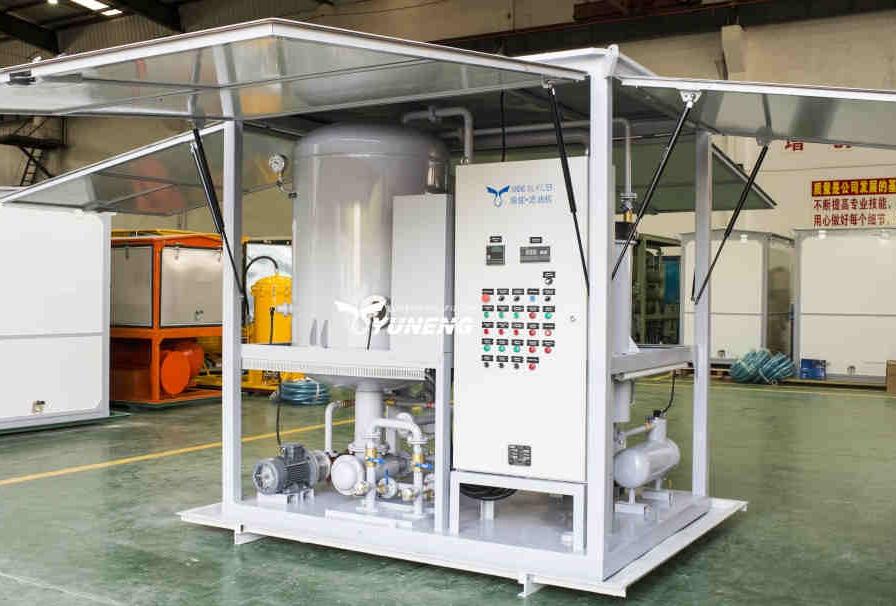A Step-by-Step Guide to a Safe and Effective Transformer Oil Dehydration Process

Transformer oil is critical for the efficient operation and longevity of electrical transformers. Its primary role is insulation and heat dissipation. Over time, transformer oil absorbs moisture and impurities, which can reduce its insulating properties and lead to equipment failure. Dehydrating transformer oil is therefore a crucial maintenance task. Here’s a step-by-step guide to achieving safe and effective transformer oil dehydration.
Step 1: Preliminary Assessment
Before beginning the dehydration process, it’s essential to assess the condition of the transformer oil. Conduct tests to determine moisture content, dielectric strength, and the presence of dissolved gases. This initial assessment guides the dehydration process and ensures it is necessary and effective.
Step 2: Selection of Dehydration Method
Various methods are used for transformer oil dehydration, including vacuum dehydration, heating, and filtration. Vacuum dehydration is the most efficient, as it removes moisture without introducing contaminants. Select the method based on the level of contamination and the capacity of your equipment.
Step 3: Prepare the Equipment
Ensure that all equipment, including vacuum pumps, heaters, and filtration units, are in good working condition. Check for leaks and calibrate instruments. Safety is paramount—transformer oil is flammable, so avoid open flames and sparks during the process.
Step 4: Heating the Oil
Heating the oil to a specific temperature (usually between 60–80°C) reduces its viscosity and facilitates the removal of water. Use controlled heating to avoid overheating, which can degrade the oil’s properties.
Step 5: Vacuum Dehydration
Connect the oil to the vacuum dehydration system. The vacuum lowers the boiling point of water, allowing moisture to evaporate from the oil efficiently. Monitor the process closely, checking pressure gauges and temperature sensors. This step may take several hours depending on the moisture content.
Step 6: Filtration and Polishing
After dehydration, pass the oil through fine filtration units to remove particulates and residual contaminants. This ensures the oil’s dielectric properties are restored and that it is free from impurities that could cause insulation failure.
Step 7: Post-Process Testing
Conduct post-process testing to confirm the oil’s moisture content, dielectric strength, and other quality parameters meet industry standards. Only return the oil to the transformer after confirming it is safe and fully dehydrated.
Step 8: Documentation and Maintenance Planning
Record the process parameters, test results, and maintenance actions for future reference. Regular monitoring and scheduled dehydration cycles prevent moisture accumulation and prolong transformer life.
Conclusion
Transformer oil dehydration is a critical maintenance practice that protects electrical infrastructure. By following a systematic, safe, and effective process, you can enhance the reliability, efficiency, and lifespan of transformers.
- Art
- Causes
- Crafts
- Dance
- Drinks
- Film
- Fitness
- Food
- Spellen
- Gardening
- Health
- Home
- Literature
- Music
- Networking
- Other
- Party
- Religion
- Shopping
- Sports
- Theater
- Wellness


